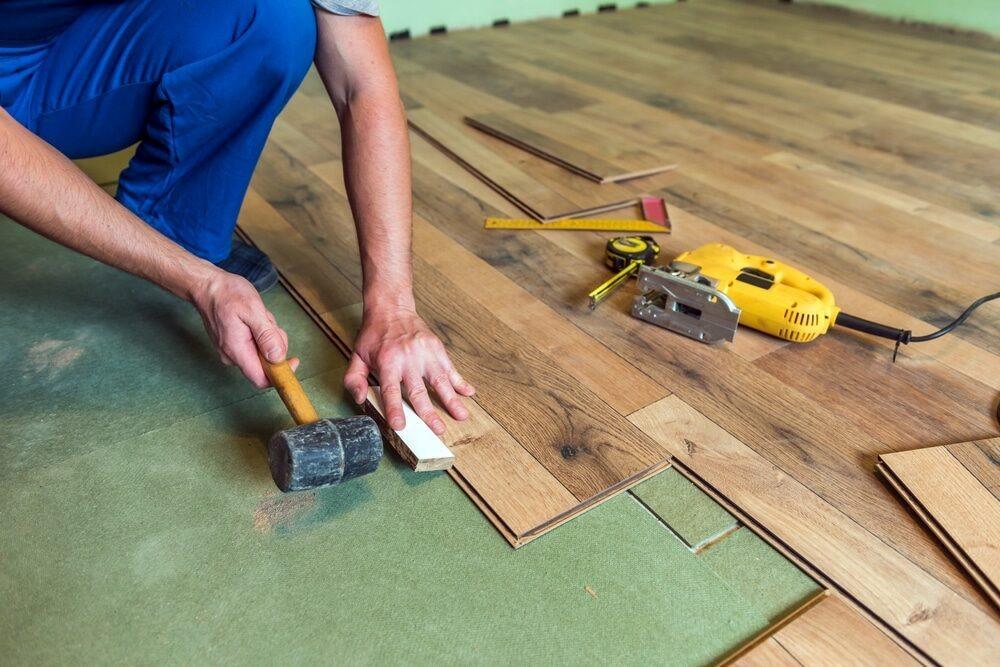The world of parquet is constantly evolving, and wooden flooring has always been a symbol of elegance and warmth. However, the traditional installation process required a lot of effort, time, and the use of adhesives.
Today, we are witnessing a real revolution in this field with the emergence of different methods for installing wood floors without glue , which are modern technologies that facilitate the process and make it cleaner and more flexible.
Ultimately, if you want to transform the look of your home and experience high-end hardwood floors, you will definitely need the expertise of professionals, but understanding the matter also helps in determining your options and evaluating the quality of service.
So let's explore these latest technologies together and answer important questions about installing wood floors without glue.
Parquet and wooden flooring installation methods: between originality and innovation
Parquet and wood flooring installation methods have evolved over the years, and each method has its own advantages and optimal uses:
Gluing Down Installation Method:
This method has been the most popular for a long time, where parquet or wood planks are glued directly to the concrete floor or other flat surface using special glue.
- Features: Provides high stability and durability for flooring, and prevents any gaps or noises when walking. Suitable for large spaces and high-traffic areas.
- Ideal Use: Ideal for homes that require a stable, strong, and long-lasting floor, as well as for commercial projects and offices.
How to install nailed parquet (Nailing Down):
This method relies on fixing solid wood parquet boards using special nails to a plywood underlayment or wooden strips fixed to the floor.
- Features: It is a traditional method that gives an authentic feel of solid wood, and allows for natural movement of the floor with changes in humidity.
- Ideal Use: Suitable for thick hardwood floors and is often used in older homes or when a classic style is desired.
Floating Installation Method:
This is the latest and most popular technology currently available, and it relies on assembling parquet boards or wooden flooring together using the Click-Lock System without the need to glue or nail them to the underlying floor. This method is also known as the "lover and lover" parquet installation method .
- Advantages: Easy and quick installation, the floor can be disassembled and reassembled as needed, does not require complex floor preparation, and allows installation over various types of old floors.
- Ideal Use: Ideal for renters, projects that require quick completion, and for covering old floors without having to remove them.
Do wood floors need to be glued? (Do you need to glue parquet floors?)
The short answer to the question, "Do hardwood floors need to be sealed?" is no, not always .
With the advent of floating installation technology, it has become possible to install many types of wood flooring, including parquet, medium-density fiberboard (MDF) or high-density fiberboard (HDF) flooring, without the need for glue.
The answer to the question of whether you need to glue parquet flooring also depends on the type of parquet and the installation method chosen.
If the parquet is of the type that can be installed using the floating method, it does not require gluing.
However, some may prefer to glue parquet, especially in large or high-traffic areas, to increase stability and reduce the possibility of noise. Traditional hardwood parquet, on the other hand, is often installed using the nailing or glueing method.
Can HDF be installed over ceramic tiles? What should be placed under the HDF?
Yes, HDF can be installed over ceramic tiles, provided the ceramic surface is level, dry, and clean.
However, it is necessary to take some preparatory steps to ensure a successful installation process.
As for the question of what is placed under HDF, when installing it over ceramic or any other surface, an underlayment is necessary. This layer plays an important role in:
- Provide a flat surface: Helps compensate for any slight variations in the flatness of the underlying surface.
- Shock absorption and noise reduction: Acts as a sound insulator and reduces noise from walking on the floor.
- Moisture Protection: Some underlayments contain a moisture barrier that protects the wood floor from moisture rising from the subfloor, which is especially important when installing over tile or concrete.
- Provides comfort: Increases the softness of the floor and makes walking on it more comfortable.
The materials used for the underlayment vary, and include various types of foam, cork, rubber, and compressed wood.
Choosing the right type depends on the type of hardwood flooring, the nature of the underlying surface, and your budget.
Tips before installing parquet: Steps to ensure perfect results
Before embarking on the parquet installation process , whether using the floating method or any other method, it is necessary to follow some pre-parquet installation tips to ensure perfect results and avoid potential problems:
- Environmental Acclimatization: At least 48-72 hours before installation, the parquet flooring should be left in the room to be installed to acclimatize to the temperature and humidity. This reduces the possibility of expansion and contraction after installation.
- Inspect the subfloor: Ensure the subfloor is level, dry, clean, and free of any defects or material residue. Any significant unevenness must be addressed before installation begins.
- Determine the installation direction: Parquet boards are usually installed in the direction of the main light source or in the direction of the longest side of the room to create a more spacious appearance.
- Leaving expansion gaps: It is necessary to leave small gaps (approximately 8-10 mm) around the edges of the room and around posts or any fixed obstructions to allow for the natural expansion and contraction of the wood with changes in temperature and humidity. These gaps will be covered later with skirting boards.
- Planning the first row: You should start with a straight row, completely flush with the wall, and make sure it is installed correctly because it will be the foundation for the rest of the floor.
- Use the right tools: Make sure you have all the necessary tools for the installation process, such as a rubber mallet, pull rod, spacers, and a saw suitable for cutting the panels.
- Follow the manufacturer's instructions: Parquet flooring always comes with specific installation instructions from the manufacturer, which must be read and followed carefully to achieve the best results and ensure the validity of the warranty.
We hope the information in this article has been helpful and perhaps even encouraged you to try parquet refinishing and enjoy its elegant appearance.
Now that you're familiar with the subject and ready to call in the experts and discuss your options, let us tell you that we would be happy to provide you with our services.
Al-Ghamlas offers the finest parquet flooring in the Kingdom, so you don't have to worry about the right installation method. Our experts, who have installed the floors of a huge number of residential units and other projects, will put their full expertise to work to ensure you get the best results. Contact us now!

